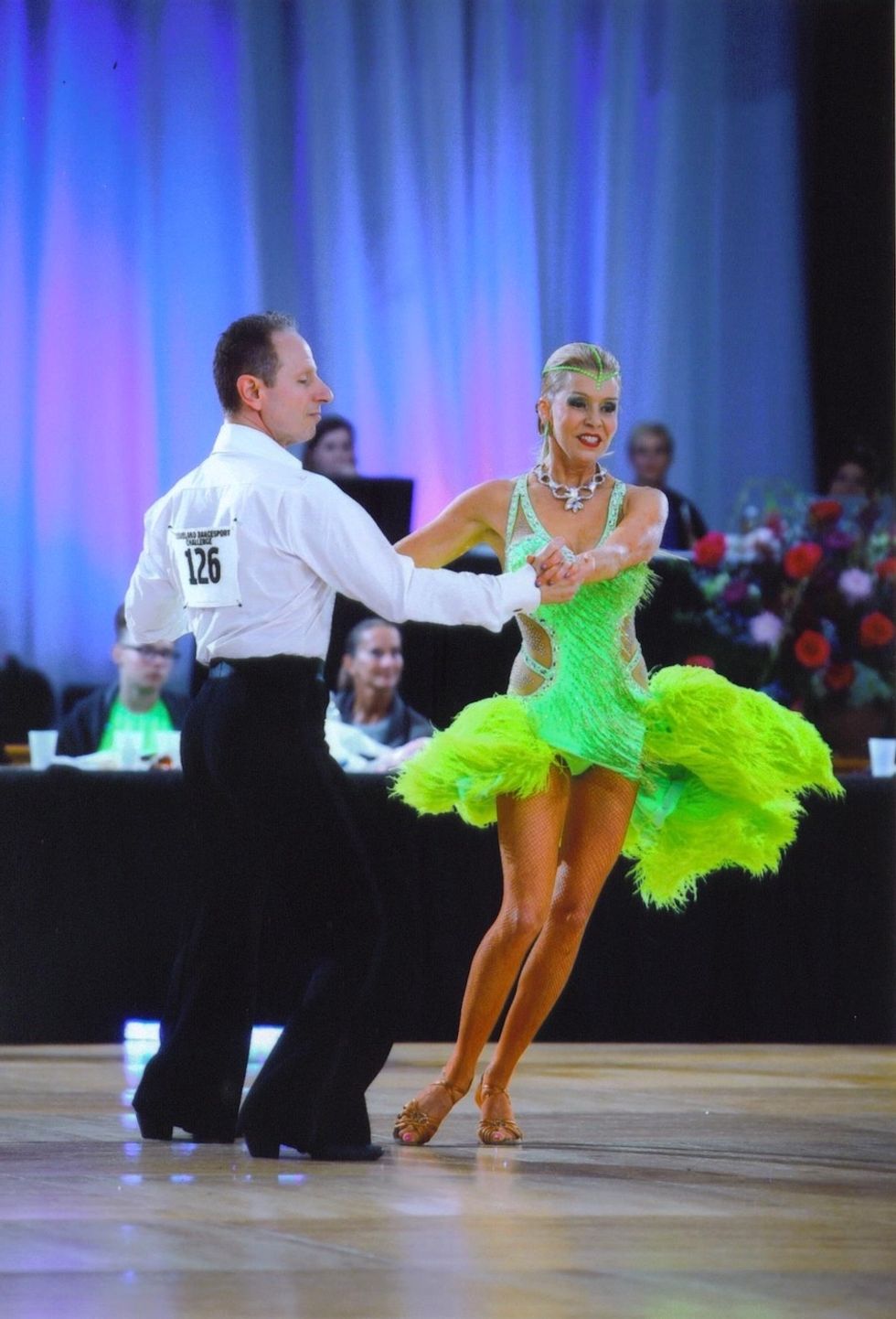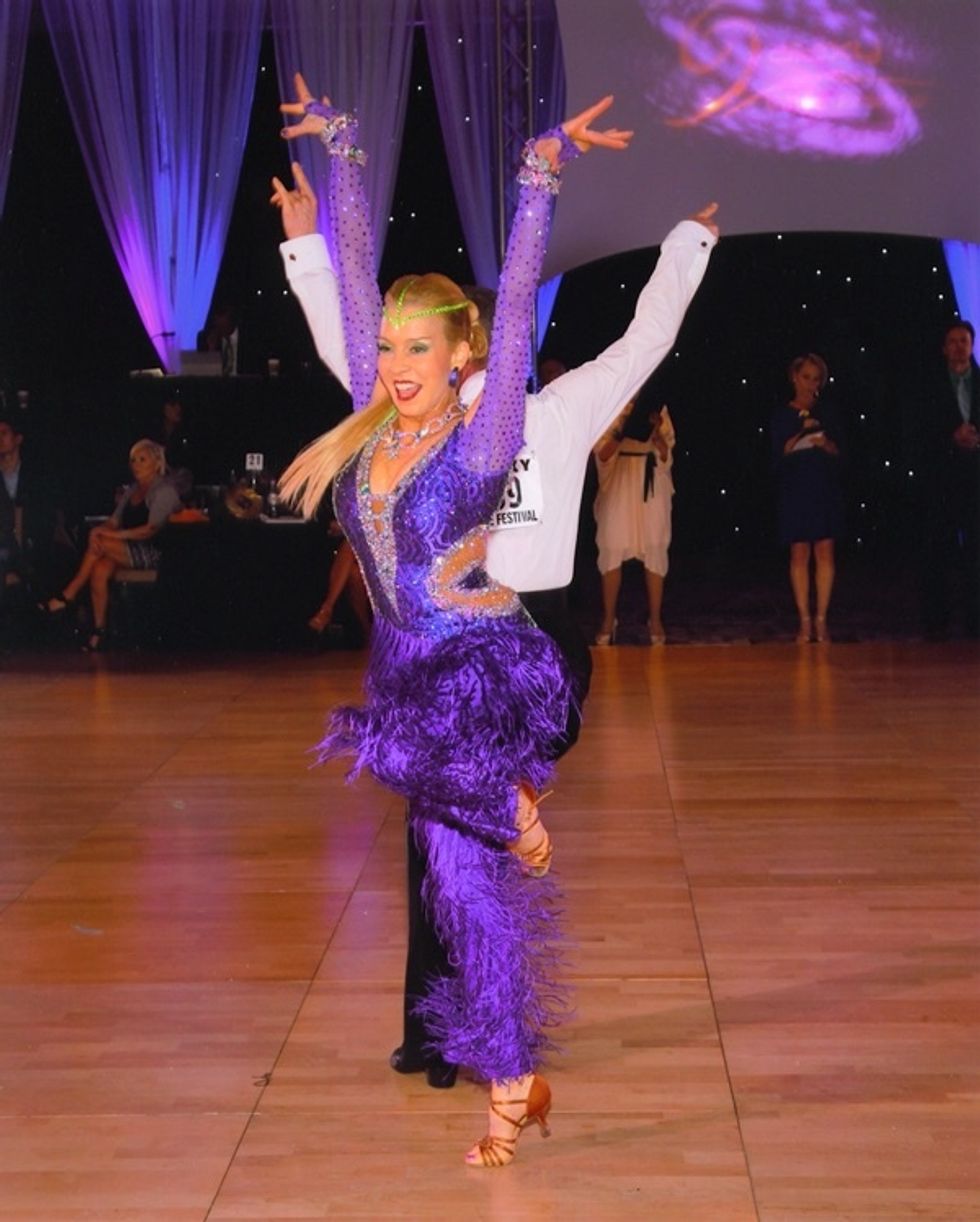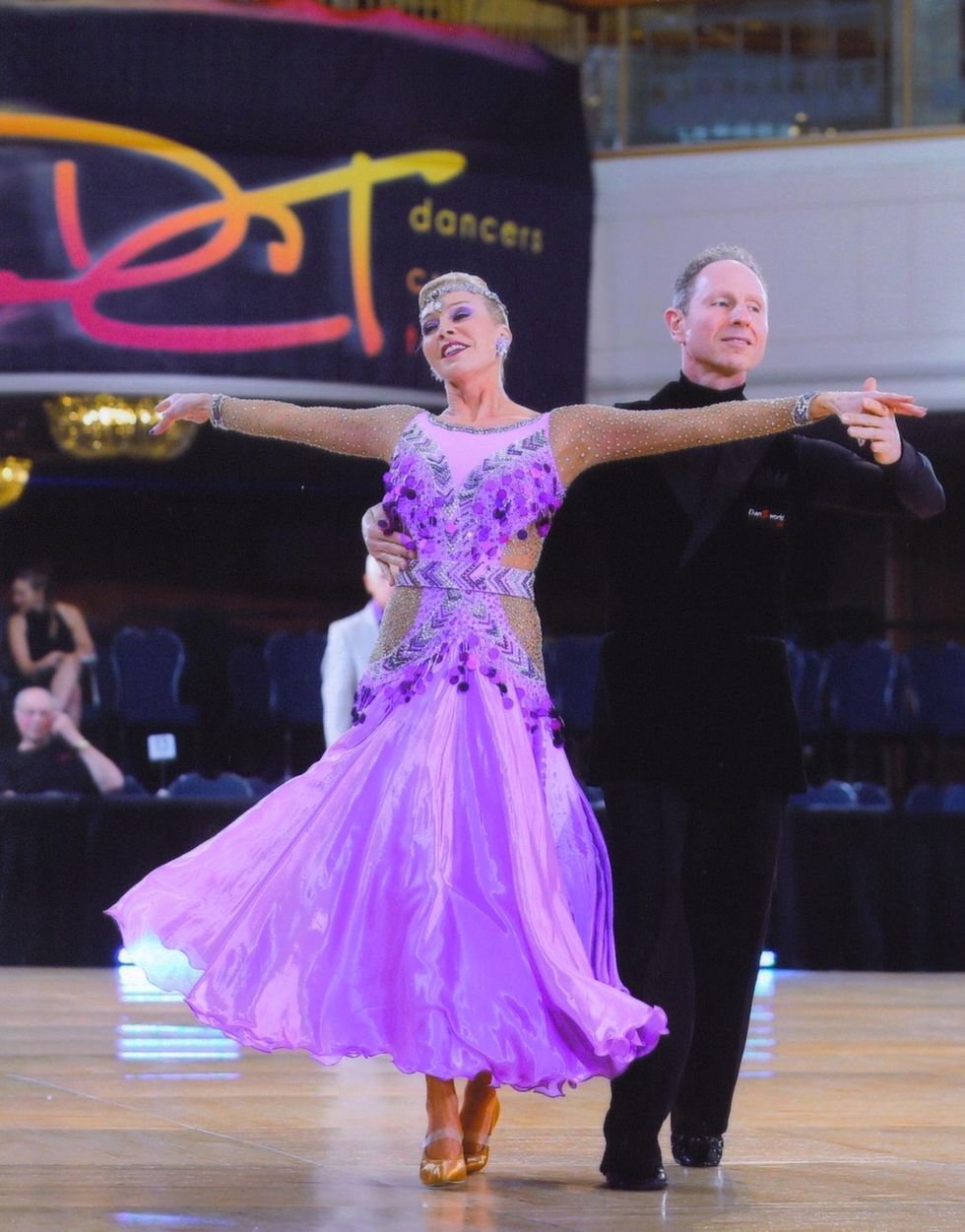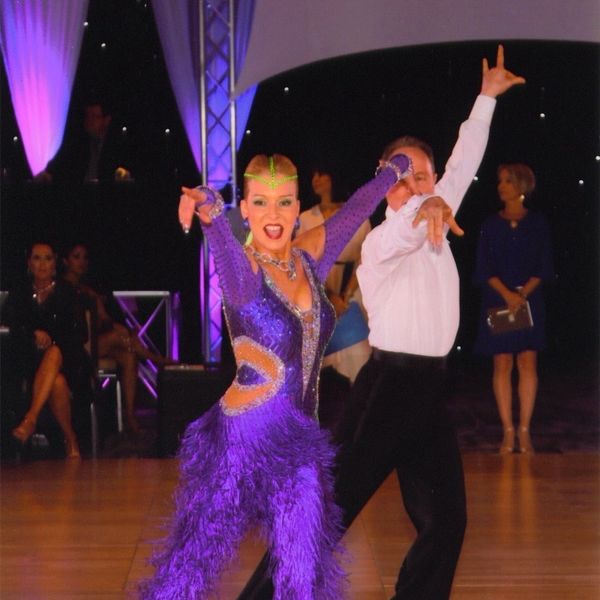Meet the Ballroom Star Who Started Dancing At 40, Had A Hip Replacement—And Still Won Two U.S. Championships
In dance, we sometimes hear of a late bloomer who defies the odds. Or of dancers who overcome incredible injuries to return to the stage.
But both? That’s not a story we hear often. That is, however, Darla Davies’ story, one that she tells in her recent book Who Said I’d Never Dance Again? A Journey from Hip Replacement Surgery to Athletic Victory. Davies, who is now 61, started her ballroom dance training just twenty years ago, and has won two U.S. championships—one of which she earned after a hip replacement.
But until Davies was about 40 years old, she didn’t have any interest in dance. She had been a competitive equestrian, and was getting tired of the “horsey thing” when one day she caught a broadcast of ballroom dancing that grabbed her attention. “I was mesmerized by the costumes and the athleticism,” she says.
She soon started taking lessons. “I was a good student and I worked hard,” she says. “I would practice at the gym by myself. I could do all my routines without a partner.”
Davies began winning medals at the beginner level almost immediately—and with the help of her now-husband Jim Maranto, a professional ballroom dancer who she met early in her training and would go on to partner—she quickly progressed up the ranks. After just five years she was competing at the advanced level, and in 2008 she won the United States Pro Am American Smooth Championship (which includes waltz, Tango, foxtrot and Viennese waltz)—even despite intensifying hip pain. “I felt lucky to win because I was so sore,” she says.
 Courtesy Davies
Courtesy Davies
“With my problem with my hip, everything changed,” says Davies. “I was anxious to go back and repeat my title but couldn’t go on.”
Physical therapy, chiropractic work, steroid injections and anti-inflammatory drugs were no longer enough, so Davies decided to pursue surgery. An orthopedic doctor discovered Davies’ severe degenerative arthritis—nearly all the cartilage in her hip was gone—but recommended that she put off hip surgery for the time being. She received the same recommendation from a surgeon, who told her that she was too young for hip surgery and that if she got it, she’d never be able to dance again.
“I was so annoyed and angered that I decided I would have to prove him wrong,” she says.
 Courtesy Davies
Courtesy Davies
Eventually, Davies found a surgeon who was willing to perform her hip replacement. Post-surgery, she didn’t waste time. “I started doing exercises in the hospital bed,” she says. Four months later, she was dancing again, and seven months later she competed for the first time with her new hip—and won all her events. Ten months later, she once again competed at the United States Pro Am American Smooth Championship, this time placing fifth.
“As pleased as I was, I still believed I could win the national title,” she says. And the next year, she did. “I was fearful that the judges knew that I had hip surgery and I thought they would have some preconceived notion that I wouldn’t be as strong,” she says. “But the proof is in the performance.”
Now 61, Davies is still competing—and winning. “Some of the best dancers are in their 50s and 60s because they’ve been working on it for so long,” she says. “I feel that I’m a much better and stronger dancer now than I was ten years ago, and ten years from now I’m going to be better than I am now.”
 Courtesy Davies
Courtesy Davies
Davies hopes her book will educate others about what it’s really like to get a hip replacement. “I want medical professionals to be able to recognize classic signs of a hip problem,” she says. “I don’t want doctors to mislead patients and make them believe that drugs and injections are going to magically fix a severely deteriorated hip joint. I don’t want people to think they have to suffer for months or years because they’re afraid to get surgery. I want them to know that great things are possible on the other side of surgery. I want them to know that you should never let people put limits on your success.”




